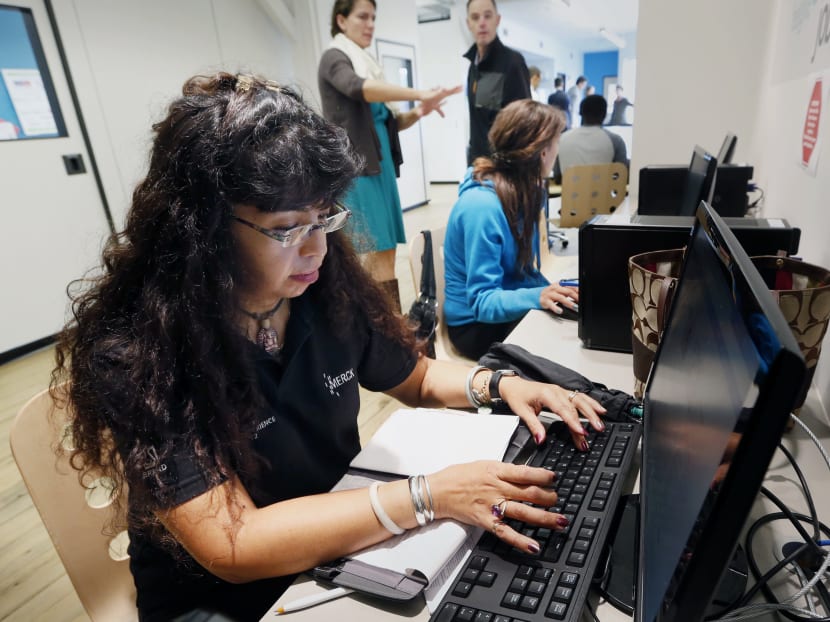Staring at screens not to blame for short-sightedness: Study
LONDON — Sitting too close to a computer or television screen does not cause short-sightedness, scientists have concluded after a 20-year study.

Photo: AP
LONDON — Sitting too close to a computer or television screen does not cause short-sightedness, scientists have concluded after a 20-year study.
Researchers at Ohio State University in the United States followed 4,500 children between the ages of six and 11 over two decades, monitoring their screen use and testing their eyes.
Although current thinking suggests that staring too long at a screen can cause short-sightedness, or myopia, which has led to the recommendation of screen breaks, the new study found there was no link between bad eyesight and youngsters who spent the most time in front of a computer or TV.
“Near work has been thought to be a cause of myopia, or at least a risk factor, for more than 100 years,” said Mr Karla Zadnik, professor and dean of the College of Optometry at The Ohio State University and lead author of the study.
“In this large dataset from an ethnically representative sample of children, we found no association.”
Researchers looked at 13 potential risk factors for myopia to determine the strongest single predictor that could identify those children most likely to become short-sighted. They discovered that the biggest predictor was the level of refractive error in the eye at the age of six.
In people with normal vision, the eyeball grows along with the rest of the body and is programmed to stop growing at a point that sustains clear vision.
In people with myopia, the typically spherical eyeball becomes elongated, resembling the shape of a grape or an olive.
Children who will grow up with normal vision are actually slightly far-sighted when they are aged six, so the potential for future myopia can be detected at this young age via a refractive error measure that reveals little to no far-sightedness.
The pervasiveness of severe myopia in Asia has more than doubled in the past 20 years and myopia rates have reached epidemic magnitudes in several parts of Asia.
The prevalence of myopia in Singapore is among the highest in the world. Twenty per cent of Singaporean children are myopic at seven years at the start of their primary education, with that figure exceeding 70 per cent upon completing college education
The findings also backed up previous research that found children who spent more time outdoors were less likely to be short-sighted. That research, performed at Australia’s Bristol School of Social and Community Medicine, made their conclusions after following 14,000 youngsters who were part of the Avon Longitudinal Study.
They found that children should spend a minimum of two to three hours outside each day in direct sunlight to avoid becoming short-sighted. The research found exposure to bright light can help regulate the eyeball’s growth in childhood, dramatically reducing the risk of myopia.
Researchers in the latest study followed 4,500 children between the ages of six and 11 over two decades. The study showed that a six-year-old child with less far-sightedness is at greater risk of developing myopia sooner.
In addition to requiring corrective lenses to see clearly, people with myopia are at higher risk for retinal detachment and glaucoma.
These new tests could help set a standard for eye exam recommendations for school-aged children. They could also be used to identify children who would be good candidates for testing of experimental therapies designed to prevent the problem.
THE DAILY TELEGRAPH





